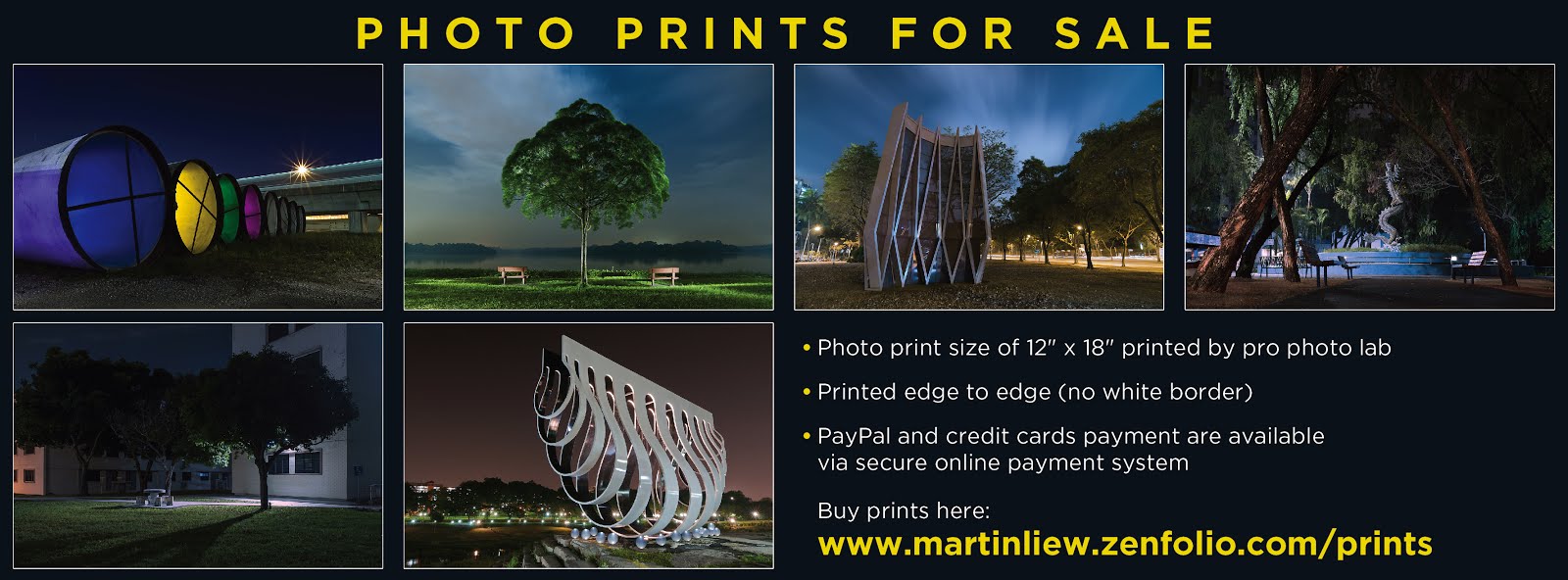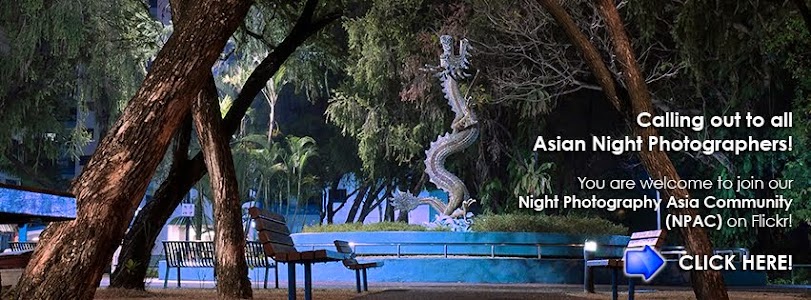Night photography generally refers to photographs taken outdoors between twilight and dusk. Originally night photographers had a choice between using artificial light such as flash units/torchlights or leaving the camera on a tripod and using a long shutter exposure, often for seconds or even several minutes to hours per exposure or multi-exposures, in order to give the film enough time to capture enough light to record a proper exposure.
As of today, with the progress of films and lenses and the increasing power of urban lights, night photography can often be achieved using available light e.g. floodlights, warm tungsten spotlights, and even under full moonlight, however, this does not make the use of long exposures or a flash obsolete. Night photography, by its very nature, is a subjective study. Almost every photographer at some point gets curious and wanders into the darkness with camera and tripod in hand.
Night Photography has the ability to take a scene and cast it in an unusual light - much like the golden hour surrounding sunrise and sunset where it can add an element of mood and uniqueness to a sunlit scene. The night has always been associated with romance, mystery, fear, and the unknown. The most magical thing about the night is the element of surprise. One can never be sure of what will happen when the shutter opens after dark.
Before I was really serious about night photography I did lots of day shootings (which I still do) and I discovered that most photographers pack up their cameras after sunset and call it a day. As I wanted to do totally different things from the others, I started out my first night photography with excitement and enthusiasm. The first camera I used was a modified Holga 120 toy camera with a fixated plastic lens. It works like a pin-hole camera.
I chose to shoot in B&W film because it has this timeless sense and creates a unique mood. When night falls, the night scenes are filled with many shadows and dark areas creating high contrast visions and most colors are flushed out. Therefore I don't see the point in taking color pictures, unlike nocturne photography which is a whole lot different subject. Using medium format film has more advantages over 35mm film, as it is able to record more tonality and details, basically because the 120 negative is much bigger. I love the square format (6x6) as it poses a great challenge in composing your subjects.
Initially, it was a trial-&-error process for me as I learned to estimate the long exposure timing based on reciprocity failure. The faster film speed (400 and above) at a wider aperture (f5.6 - f2.8), it requires shorter exposure timing. The slower film speed (200 and below) at the smallest aperture (f8 - f22), the longer exposure timing. Not to forget about Depth of Field which depends on how much is required on the subjects based on personal preferences and the art of seeing.
The results from the Holga were really bad but I did not give up easily. I switched the camera to an old Shanghai TLR (equivalent to a Seagull-4) which I inherited from my dear mother. It is the first model and predecessor of all Seagull TLRs (I'll touch on the history of Seagull TLRs soon). I got better photographs out of it and use it ever since. As I made more night pictures, I learned from my mistakes and finally came up with a set of long-exposure timing. I recorded every single exposure detail on my small notebooks and it really helps a long way. As Stever Harper stated in his article "
Dark Venture: A Study of B&W Night Photography".
"Night photography remains an experimental subject primarily because it is uncontrollable in its further reaches. Even if one wishes to reshoot exactly the same photograph the following night, the end result will be different because one is dealing with the imponderables-the atmosphere and the unexpected things that happen in front of an open shutter during a time exposure. Consequently, each effort is fresh, exciting, and filled with new insights."
Through all the endless sleepless Saturday nights in photo-making, I got more serious about my photographic work and thus my
Nite Projekt was born. I truly enjoy taking pictures in the night, for its beauty, tranquility, and calmness. Maybe it's a way of seeking solitude I guess. Nothing is more pleasing and relaxing than taking night pictures in the wee hours all alone. Night photography makes me think harder on every single exposure before I press that shutter release. I've learned to be more self-critical about my own work. Photography is all about self-expression and night photography gives me that freedom and space for expressing my artistic views.
Talking about local security, never take it for granted. Once a photography instructor told me, "Never take night pictures alone. Always go out in small groups." Well, he has a point there. It's a lie if I say I've never encountered any incident/situation during all those night outings. Yes, I did encounter it once and it was a strange one though. In spite of this, Post-9/11 is a tough time for night photographers, not only in the States but globally. Don't let it put you down. With each individual's art of seeing, there are still many possibilities in taking night pictures at any "safe" locations.





























